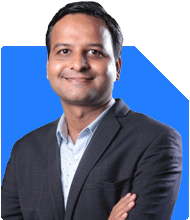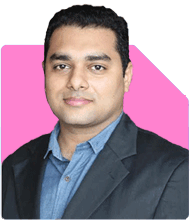Retired in 18 years with Rs 32 lakhs: How to invest a lumpsum of Rs 15 lakhs for an aggressive retirement portfolio?
Ramalingam Kalirajan |10870 Answers |Ask -Follow
Mutual Funds, Financial Planning Expert - Answered on Nov 26, 2024
He has an MBA in finance from the University of Madras and is a certified financial planner.
He is the director and chief financial planner at Holistic Investment, a Chennai-based firm that offers financial planning and wealth management advice.... more

I have existing mutual fund investments of about Rs 17.1 lakhs with following breakup based on current value of investments: Equity - 61.2% Debt - 32.7% Gold - 6.1% In Equity investments following is the break-up as per current value of investment: International (US Blue ship fund, Nasdaq 100 FOF) - 6.3% Large cap (bluechip + Nifty 50 Index + Nifty Next 50 Index) - 35% Midcap (Midcap + Midcap 150 Index) - 31% Small cap (Smallcap + Smallcap 120 Index) - 27.7% I already have investments in PF (18 lakhs), NPS (4.5 lakhs) and other investments to take care of my other financial goals like children education and marriage. I also have sufficient life insurance, health insurance coverage and have corpus in bank FD for 4 months expenses. I am receiving a lumpsum money of about Rs 15 lakhs. I want to invest the same in mutual funds. Considering current market situations, what should be my investment strategy, portfolio allocation etc? These mutual fund investments - existing 17 lakhs and upcoming 15 lakhs are for my retirement goal which is 18 years from now. I am comfortable with aggressive investment strategies. My current monthly expenses are 75,000 per month and I do SIP of 25,000 per month.
Your existing portfolio demonstrates good diversification across asset classes: equity, debt, and gold.
Equity investments are well spread among large-cap, mid-cap, small-cap, and international funds. This allocation aligns with an aggressive investment approach.
Your PF, NPS, and FD provide a stable safety net, showing thoughtful financial planning.
Regular SIPs of Rs. 25,000 per month reflect disciplined investment habits.
Your sufficient life and health insurance coverage highlights a prudent risk management strategy.
Analysing Your Financial Goal
Your retirement goal is 18 years away, allowing for a long-term investment horizon.
An aggressive approach is suitable given your comfort level with higher risk and long-term perspective.
Lumpsum investments should complement your existing SIPs and align with your asset allocation.
Recommended Portfolio Allocation for Lumpsum Investment
Equity Allocation (70-75%): Focus on diversified equity funds. Prioritise mid-cap and small-cap categories for higher growth potential.
Debt Allocation (20-25%): Include a mix of hybrid funds and dynamic bond funds for stability and risk moderation.
Gold Allocation (5-10%): Continue to hold a small portion in gold for diversification and inflation hedge.
Strategy for Equity Investments
Reduce Overlap: Avoid funds that replicate the same indices or sectors. This ensures diversification across industries and geographies.
Actively Managed Funds: Actively managed funds outperform index funds over long periods due to their ability to pick quality stocks.
Minimise International Exposure: Limit international funds to 10% of your equity allocation due to currency risks and higher volatility.
Strategy for Debt Investments
Dynamic Bond Funds: These adjust to interest rate cycles and provide better returns than fixed-income instruments.
Hybrid Funds: Balances equity growth and debt stability, reducing volatility over time.
Short-Term Debt Funds: Ideal for a portion of the allocation to ensure liquidity if needed.
Why Prefer Regular Mutual Funds Over Direct Funds
Regular funds offer guidance through certified mutual fund distributors (MFDs) and certified financial planners (CFPs).
Expert advice ensures better alignment with your goals and provides clarity during volatile market phases.
A CFP’s personalised service often outweighs the cost difference with direct funds.
Taxation Considerations
Long-term capital gains (LTCG) above Rs 1.25 lakh on equity funds are taxed at 12.5%.
Short-term capital gains (STCG) on equity funds attract a 20% tax.
Debt funds are taxed as per your income tax slab.
Efficient tax planning can optimise returns over your investment horizon.
Strategy to Manage Market Volatility
Systematic Transfer Plan (STP): Invest your Rs. 15 lakhs into a liquid fund and transfer monthly to equity funds. This reduces timing risks in a volatile market.
Rebalancing: Review your portfolio annually to realign with your target allocation.
Avoid Emotional Decisions: Stay focused on your long-term goals rather than reacting to short-term market fluctuations.
Building a Comprehensive Retirement Plan
Continue your SIP of Rs. 25,000 per month and increase by 10% annually.
Align your investments to achieve inflation-adjusted corpus for your retirement.
Keep your emergency fund updated to cover six months of expenses.
Periodically review and adjust your life and health insurance coverage.
Avoid Common Investment Pitfalls
Over-diversification: Too many funds dilute returns. Keep the number of schemes manageable.
Ignoring Inflation: Factor inflation into your corpus target.
Neglecting Rebalancing: Rebalancing ensures the portfolio stays aligned with risk tolerance and goals.
Final Insights
Your financial discipline and well-rounded portfolio are commendable.
With systematic planning and aggressive strategies, you can achieve your retirement corpus comfortably.
Diversify thoughtfully, review regularly, and focus on quality investments to maximise returns.
Best Regards,
K. Ramalingam, MBA, CFP,
Chief Financial Planner,
www.holisticinvestment.in
https://www.youtube.com/@HolisticInvestment
You may like to see similar questions and answers below
Nikunj Saraf | Answer |Ask -Follow
Mutual Funds Expert - Answered on May 22, 2023
Ramalingam Kalirajan |10870 Answers |Ask -Follow
Mutual Funds, Financial Planning Expert - Answered on Jul 29, 2024
Ramalingam Kalirajan |10870 Answers |Ask -Follow
Mutual Funds, Financial Planning Expert - Answered on Oct 16, 2024
Ramalingam Kalirajan |10870 Answers |Ask -Follow
Mutual Funds, Financial Planning Expert - Answered on Apr 23, 2025
Ramalingam Kalirajan |10870 Answers |Ask -Follow
Mutual Funds, Financial Planning Expert - Answered on Jul 28, 2025
Dr Dipankar Dutta |1837 Answers |Ask -Follow
Tech Careers and Skill Development Expert - Answered on Dec 05, 2025
Dr Shyam Jamalabad |108 Answers |Ask -Follow
Dentist - Answered on Dec 05, 2025
Dr Shyam Jamalabad |108 Answers |Ask -Follow
Dentist - Answered on Dec 05, 2025
Dr Shyam Jamalabad |108 Answers |Ask -Follow
Dentist - Answered on Dec 05, 2025
Dr Dipankar Dutta |1837 Answers |Ask -Follow
Tech Careers and Skill Development Expert - Answered on Dec 05, 2025
Ulhas Joshi |280 Answers |Ask -Follow
Mutual Fund Expert - Answered on Dec 05, 2025
Dr Dipankar Dutta |1837 Answers |Ask -Follow
Tech Careers and Skill Development Expert - Answered on Dec 04, 2025
Ravi Mittal |676 Answers |Ask -Follow
Dating, Relationships Expert - Answered on Dec 04, 2025
Anu Krishna |1745 Answers |Ask -Follow
Relationships Expert, Mind Coach - Answered on Dec 04, 2025
Anu Krishna |1745 Answers |Ask -Follow
Relationships Expert, Mind Coach - Answered on Dec 04, 2025




























